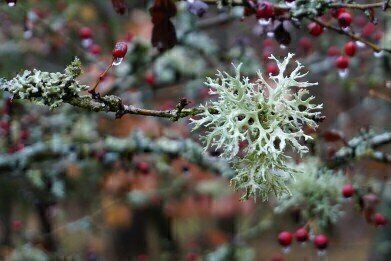Air Clean Up
Why Are Lichens a Warning Sign of Climate Change?
Jan 22 2019
They may look like plants, but lichens are actually a complicated and unusual mix of algae and fungi. When taking root on a substance, the alga (or cyanobacterium) initially puts down roots, so to speak, while the fungi then comes later. The latter is incapable of photosynthesis and as such, relies on the alga to provide it with nutrients. In this way, the pair can live together in harmony; lichen might seem like a single organism, but it’s actually a combination of the two.
Aside from its interesting biological makeup, lichen can also serve a useful purpose in documenting changes in its environment. The proliferation of certain species and the disappearance of others can indicate a gradual rise or fall in ambient temperatures, while the symbiotic species can also serve as something of a barometer for air pollution.
Tough as old boots
Despite their sensitivity to the changing conditions of their environments, lichens are pretty well-equipped to hold up in even the most hostile of habitats. For example, they have been located in extreme climates like the arid, stifling hot desert to the freezing frost of Antarctica. What’s more, they have also withstood conditions in space; a recent study placed lichens on the exterior of the International Space Station (ISS) and observed their resilience to sub-zero temperatures, ultraviolet radiation and a complete absence of water.
Such qualities mean that lichens can endure in any environment. They have been frozen in ice and later reanimated, or completely dried up and then resurrected once rehydrated. As such, they would make an excellent candidate for an exploratory mission to Mars, should the need ever arise.
Logging climate change
Closer to home, however, lichens can also provide valuable lessons about our own planet. In much the same way that corals can serve as a natural archive of environmental and climate change, lichens are sensitive to the subtle but significant fluctuations in temperature, affecting the way they live and proliferate.
For example, Mediterranean strains of the species are more adept at flourishing in warmer climes, so their proliferation in the UK over recent years indicates a gradual warming of national temperatures. Meanwhile, those strains which are more at home in cooler, dryer weather are slowly on the decline in this country.
Natural air quality monitors
Lichens are also vulnerable to changes in air quality. When certain contaminants (for example, sulphur dioxide, or SO2) mingle with the rainwater which lichens absorb to stay alive, their life systems struggle and they begin to die. Similar air quality monitoring properties can also be observed in moss, although moss differs from lichen in that it is a plant.
There are of course different species of lichen with different capacities for survival in polluted air. Bushy specimens are the most vulnerable to poor air quality, while leafy ones can withstand some pollution but are still susceptible. Crusty-leafed lichens are the hardiest variety and can survive most climates. As a general rule, however, cities or towns where lichens are not found suffer from dangerously high levels of contamination.
Events
Apr 22 2024 Hannover, Germany
Apr 23 2024 Kuala Lumpur, Malaysia
Apr 24 2024 Sao Paulo, Brasil
May 05 2024 Seville, Spain
May 13 2024 Munich, Germany














